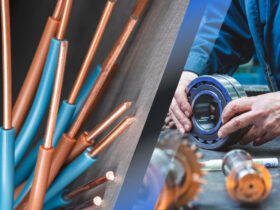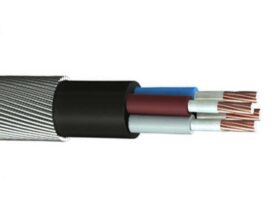Rubber cables also known as Elastomer cables are widely used as insulation materials in electrical utilities such as the generation and transmission of electricity as well as in special activities like mining, ship wiring, transportation and defence sectors. Hence, it is imperative that these cables are built using the latest innovations in technology and high safety standards in order to avoid fatal accidents. While making good quality rubber cables, elastomer materials such as Polychloroprene (PCP), Chloro-Sulphoneted Polyethelene (CSP), Nitrile Rubber /PVC blends, Ethylene Propelene Rubber (EPR), Ethylene Vinyle Acetate (EVA) and Silicone have been specially used to meet the numerous heat and fire testing requirements. It is absolutely necessary that elastomeric compounds are formulated to meet the requirement of IS 6380, BS 6899, IEC 60502 and other international specification.
Specifications:
- The conductor ideally is made of annealed tinned copper wires normally classified as Class 1 (Solid), Class 2 (Stranded), Class 5 (flexible).
- It is important that suitable material separator tape should be applied over the conductor to ensure high safety standards.
- For optimum insulation great care should be taken that general service elastomer compound, heat resistance elastomer compound and silicone rubber type that ascribe to international standards of quality and safety are used,
- As fillers natural or synthetic fibres or elastomers suitable for the operating temperature and compatible with the insulating material should be used.
- Good quality general service sheath and heavy duty sheath should be utilized in making rubber cables.
Silicon Rubber insulated cables are primarily utilized in the generation and transmission of electricity. It is extremely vital that these cables have long service life under normal conditions in nuclear and conventionally powered engineering stations and that they should also conform to the international standards of safety. Silicon Rubber cables are flame-retardant and do not propagate flames when exposed to fire. These cables are generally used in steel Mills, EOT cranes, airport lighting, ships, nuclear and thermal power stations, wind power Mills, electrical machines, textile machines, construction equipments, turbines.
Rubber sheathed cables are also used while welding for the secondary connection with automatic or handheld metal arc welding electrodes. Proper sizing of a rubber cable for welding equipment is essential for machine safety, machine longevity, and quality welds. These cables can also be used under rugged conditions. The conductor used in such cables normally has a high conductivity and flexibility and is made of bare annealed copper. Also the cables are double sheathed with specially developed thermoplastic elastomer.
It might be interesting to note that originally elastomer cables were made out of natural rubber, getting replaced by synthetic rubber only in the seventies.









Leave a Reply